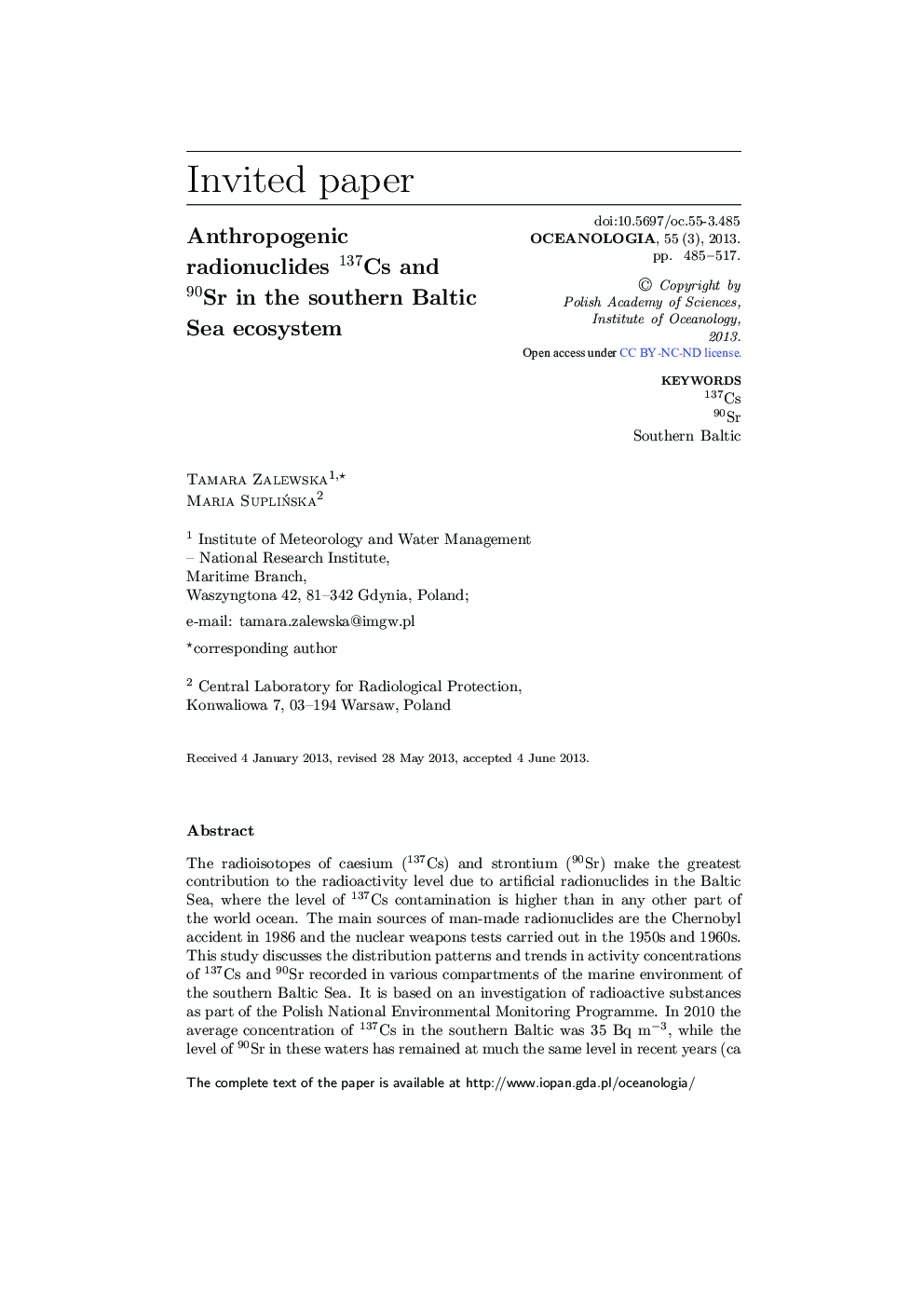| Article ID | Journal | Published Year | Pages | File Type |
|---|---|---|---|---|
| 2069893 | Oceanologia | 2013 | 33 Pages |
The radioisotopes of caesium (137Cs) and strontium (90Sr) make the greatest contribution to the radioactivity level due to artificial radionuclides in the Baltic Sea, where the level of 137Cs contamination is higher than in any other part of the world ocean. The main sources of man-made radionuclides are the Chernobyl accident in 1986 and the nuclear weapons tests carried out in the 1950s and 1960s. This study discusses the distribution patterns and trends in activity concentrations of 137Cs and 90Sr recorded in various compartments of the marine environment of the southern Baltic Sea. It is based on an investigation of radioactive substances as part of the Polish National Environmental Monitoring Programme. In 2010 the average concentration of 137Cs in the southern Baltic was 35 Bq m− 3, while the level of 90Sr in these waters has remained at much the same level in recent years (ca 8 Bq m− 3). The distribution of isotopes in the bottom sediments reflect historical events that can be identified in sediment profiles. The activity concentrations of the caesium isotope are the highest in sediments from the Gulf of Gdańsk, whereas the least polluted sediments are found in the Bornholm Basin, in the western part of the southern Baltic. The highest concentrations of 137Cs in benthic plants were measured in the red alga Polysiphonia fucoides: 22.3 Bq kg− 1 d.w. in June and 40.4 Bq kg− 1 in September. These levels were much higher than those found in the bivalve Mytilus trossulus (7.3 Bq kg− 1 d.w.). 137Cs concentrations in fish have decreased in time, reflecting the trends recorded in seawater. In 2010 the respective 137Cs activities in Clupea harengus, Platichthys flesus and Gadus morhua were 4.7, 4.9 and 6.6 Bq kg− 1 w.w.
